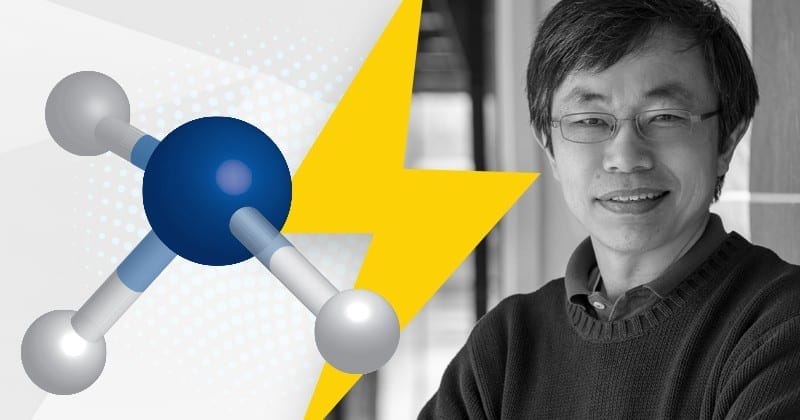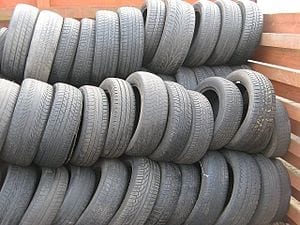
Scientists at the Department of Microsystems Engineering present a new concept for biofuel cells
Sabine Sané, doctoral candidate in the research training group Micro Energy Harvesting at the Department of Microsystems Engineering (IMTEK) of the University of Freiburg, has found a way to make a species of tree fungus useful for the production of electricity. The new energy conversion concept was chosen as the cover story of ChemSusChem, a journal for chemistry, sustainability, energy, and materials. The research was supported by scientists from a research group led by Dr. Sven Kerzenmacher at Prof. Dr.Roland Zengerle’s Laboratory for MEMS Applications.
Biofuel cells produce electricity that is environmentally friendly and conserves resources, for instance from organic waste material. They can use enzymes as catalysts to enable electrochemical reactions that generate electricity. In contrast to precious metal catalysts in conventional fuel cells, these enzymes can be obtained at low cost from renewable raw materials. For many technical applications, however, their lifetime is too short.
The new concept developed by the Freiburg scientists solves this problem by ensuring that the fuel cell is continually resupplied with the biocatalyst. The supplier of the fuel cell is Trametes versicolor, a tree fungus that is also found in temperate climates: It releases the fungal enzyme laccase into a solution surrounding the cathode – the positive pole of the cell – where it enables the electrochemical conversion of oxygen. Experiments conducted by the researchers demonstrate that this method can be used to extend the lifetime of the cathodes to as much as 120 days, and even considerably longer lifetimes seem possible. By comparison, the cathodes only have a lifetime of 14 days if they are not supplied with more of the enzymes. Since the enzymatic solution can be supplied directly to the fuel cell without time-consuming and expensive purification, the costs are reduced to a minimum. Potential applications for the concept include microbial fuel cells that generate electricity from wastewater, a technology Kerzenmacher’s research group is also developing.
The Latest Bing News on:
Biofuel Cells
- For sustainable aviation fuel, researchers engineer a promising microorganism for precursor productionon May 9, 2024 at 8:09 am
Sustainable aviation fuels made from renewable sources of carbon could reduce carbon dioxide emissions and help to mitigate climate change. Isoprenol is a chemical involved in the production of a jet ...
- Why Is Breaking Down Plant Material for Biofuels So Slow?on May 9, 2024 at 1:52 am
Compared to the breakdown of other biofuel materials like corn, breaking down cellulose is slow and inefficient. New research led by Penn State investigators has revealed how several molecular ...
- Holland America Line Kicks Off Pioneering Biofuel Tests on Rotterdam Cruise Shipon May 4, 2024 at 4:22 am
The Rotterdam cruise ship, Holland America Line's flagship, received its first taste of biofuel prior to leaving the Port of Rotterdam in the Netherlands at the end of April as part of an ...
- ATA, 8 Others Ask EPA to Adjust Biofuel Output Volumeson May 3, 2024 at 1:42 pm
Renewable fuel production targets set by the U.S. Environmental Protection Agency are too low to sustain the sector and have resulted in shuttered biofuel companies, a consortium of trade ...
- DS Smith invests R&D in biofuel cells specialist BeFCon May 2, 2024 at 9:47 am
DS Smith has announced a new partnership with Bioenzymatic Fuel Cells (BeFC), the recyclable smart tags specialist.
- Bergen Engines to Power World’s Largest Hydrogen Ferrieson May 2, 2024 at 3:19 am
Norwegian power solutions supplier Bergen Engines has been selected to provide four generating sets to support the world’s largest hydrogen ...
- Legislators too ‘trigger-happy' on banning alternative fuels, Volvo Trucks sayson April 29, 2024 at 11:43 am
As legislators and regulators across the globe pursue fully emissions-free transportation, Volvo Truck's complaint raises questions about whether alternative fuels have a role to play in a green ...
- FuelCell Energy's technology to be used in Sacramento wastewater biofuel clean energy projecton April 11, 2024 at 6:44 am
FuelCell Energy's (NASDAQ:FCEL) carbonate fuel cell technology will be used in a biogeneration project developed by Ameresco for the Sacramento Area Sewer District to convert on-site biofuel into ...
- FuelCell Energy Technology to be Used in Sacramento Wastewater Biofuel Clean Energy Projecton April 11, 2024 at 1:00 am
to convert on-site biofuel into clean electricity. One of the company’s 2.8-Megawatt carbonate fuel cell platforms, which produces power and useful heat from biogas and has the potential for ...
- Biofuel, solar power plants proposed for Pearl Harbor would demolish historic structureson April 10, 2024 at 5:00 pm
FORT SHAFTER, Hawaii — The Navy plans to lease out 25 acres on Joint Base Pearl Harbor-Hickam for a pair of biofuel and solar energy plants expected to be operational by 2027. The Navy is now ...
The Latest Google Headlines on:
Biofuel Cells
[google_news title=”” keyword=”Biofuel Cells” num_posts=”10″ blurb_length=”0″ show_thumb=”left”]
The Latest Bing News on:
Microbial fuel cells
- For sustainable aviation fuel, researchers engineer a promising microorganism for precursor productionon May 9, 2024 at 8:09 am
Sustainable aviation fuels made from renewable sources of carbon could reduce carbon dioxide emissions and help to mitigate climate change. Isoprenol is a chemical involved in the production of a jet ...
- What’s that?…A fuel cell that harvests energy from…dirt?on April 26, 2024 at 7:10 am
A soil microbial fuel cell where microbes in dirt could power applications which are literally “in the field”.
- Revolutionizing Clean Energy: SRMAP's Breakthrough in Fuel Cell Technology with LaFeO3 Perovskiteon April 26, 2024 at 12:01 am
In the quest for sustainable energy solutions to meet the soaring global energy demands, an innovative breakthrough has emerged from the laboratories of SRM University-AP, situated in the picturesque ...
- Teen brothers teach Alberta students about microbial fuel cell technologyon April 25, 2024 at 3:39 pm
Aaron Tan, 16, is in Grade 11, at Calgary's Westmount Charter Mid-High School, while his brother Justin Tan, 15, is in Grade 9. It was just last year that the pair decided to share their love of ...
- How the Navy Is Fighting Climate Change With Action on Clean Energyon April 24, 2024 at 11:42 am
The U.S. military is the world's largest single source of climate pollution. Work at the Naval Research Laboratory offers greener fuel for sailors and Marines.
- Recycling and Waste Newson April 22, 2024 at 4:59 pm
Methane Emissions from Landfill Could Be Turned Into Sustainable Jet Fuel in Plasma Chemistry Leap ... Scientists Replace Fishmeal in Aquaculture With Microbial Protein Derived from Soybean ...
- Scientists develop new technology that generates essentially endless power from dirt: 'The fuel cell can potentially last forever'on March 15, 2024 at 1:52 pm
The process of developing microbial fuel cells, the basis for dirt-fueled power, began in 1911 — as the Independent explained — when British botanist Michael Cressé Potter first successfully ...
- This Female Entrepreneur Is Using Microbial Fuel Cell Technology To Improve Industrial Wastewater Treatmenton August 23, 2021 at 8:44 am
diesel fuel (trucking) and natural gas (incineration). To help address some of these core issues, Bretschger said in an interview that "the wastewater produced by manufacturing facilities is often ...
- Supercharged: the biofilm anodeon March 29, 2019 at 9:12 am
Microbial fuel cells generate an electric current by harvesting the electrons that are produced by the respiration of substrates. Reporting in Biotechnology & Bioengineering, Kato Marcus and ...
The Latest Google Headlines on:
Microbial fuel cells
[google_news title=”” keyword=”microbial fuel cells” num_posts=”10″ blurb_length=”0″ show_thumb=”left”]











